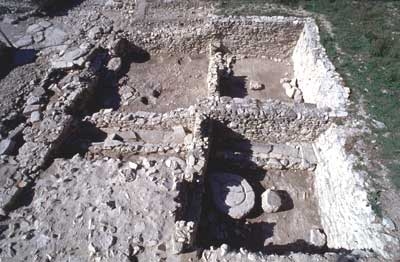- Home
- Research and interpretations
- Contributions of recent research
Excavations of 1999
Research conducted over the last twenty years, which will be published in a collective work, has completed the knowledge obtained through previous work. The data in general has become more precise, but most notably, our perception of the formation and differential structuration of the successive settlements has been renewed. Several interrogations that were formerly out of reach are now finding the beginnings of responses. Let us look at two examples:
A refined chronology of the two settlements
The chronology of settlement 1 is now well established for the first half of the 2nd century. We also know that the chronology of settlement 2, which envelops the first one at around the middle of this century, indeed includes the two military destructions observed by Robert Ambard and Fernand Benoit. According to comparisons of the artifacts found at Entremont with those found at other regional sites from the second half of the century, the latter destruction would have occurred after 125 BC, sometime between 110 and 90 BC.
New interpretations of settlement 2
The architecture and artifacts of settlement 2 show that its creation did not result from a simple amplification of the first settlement caused by an in-situ cultural evolution. It rather ensued from the economic regrouping of exterior regional populations in a time of war. These new inhabitants came equipped with technical and craft skills that were not formerly known at the site (generalized metalwork, glass, transformation of agricultural products with presses). They also brought with them the sculptural elements associated with their aristocratic families. According to the hypothesis, populations from the territories of the surrounding plains, undoubtedly from agricultural domains, were integrated before the beginning of the mid 2nd century.
While it may also be the "last bastion" of the Salyen resistance, the major interest of the fortified settlement of Entremont lies in the rapid succession of these occupations and the nature of their components. The socio-economic differences thus revealed in the Celto-Ligurian world of the mid 2nd century show us the internal dynamics and strong contrasts that existed within communities that we long believed to be highly egalitarian.
